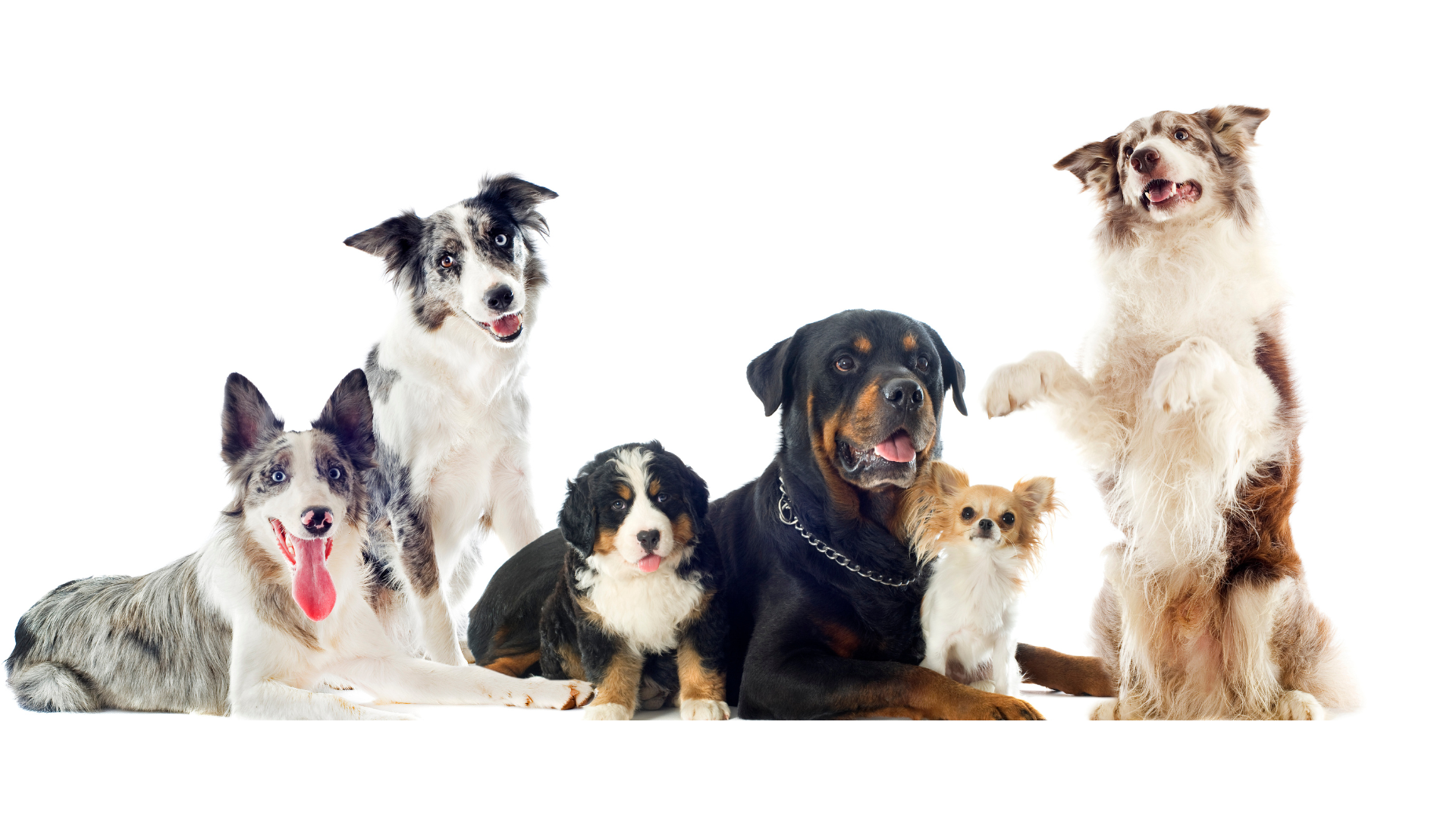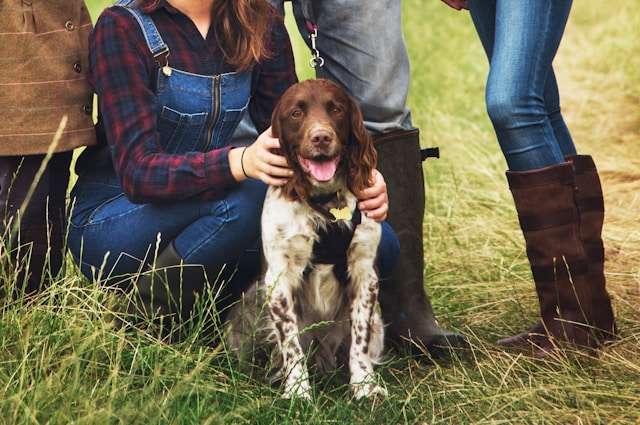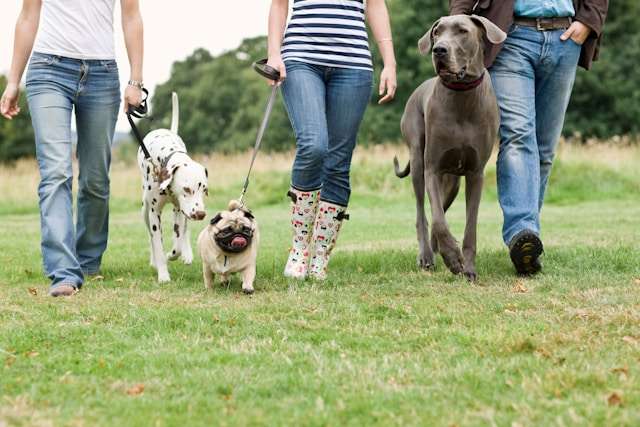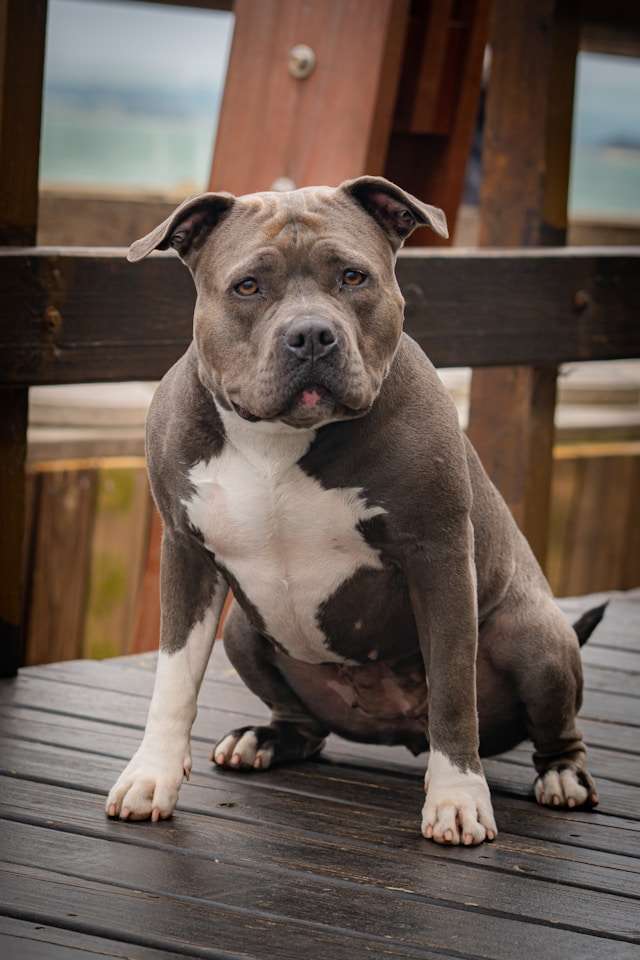Dog Breeds: Discover the Best Types for Every Lifestyle

Dog Breeds: Discover the Best Types for Every Lifestyle. Dogs come in various breeds, each with unique traits and characteristics that make them special.
Understanding these differences is essential for choosing the right dog for our families and lifestyles. From playful Labradors to tiny Chihuahuas, the choice of breed can influence everything from energy levels to grooming needs.
We’ll delve into their history, temperament, and classification as we explore dog breeds. Each breed’s story is shaped by purpose and environment, which informs how they interact with us and our families. Knowing these backgrounds helps us appreciate what each dog brings into our home.
We will also cover practical aspects, such as health and care requirements, to help us make informed decisions. Whether we are dog owners or just enthusiasts, understanding breeds allows us to embrace the joy dogs fully can bring into our lives.
Table of Contents
Key Takeaways
- Different dog breeds offer unique characteristics that suit various lifestyles.
- Knowledge of breed history and care can enhance our experience with dogs.
- Choosing the right dog breed is crucial for family harmony and well-being.
History and Development
The history and development of dog breeds show a fascinating journey from early domestication to modern selective breeding practices. Understanding these stages helps us appreciate dogs’ diversity and characteristics today.
Early Domestication
Dogs were among the first animals humans domesticated, with estimates suggesting this process began 10,000 and 40,000 years ago. Evidence indicates that ancestral wolves adapted to human presence by scavenging for food.
Over time, humans began to tame these wolves, leading to a close relationship. This partnership provided benefits like protection and companionship. Early dog breeds were primarily developed for practical purposes, such as herding livestock or hunting game. For example, the Akita breed was initially used to hunt large game in Japan.
Selective Breeding
As societies evolved, we began selectively breeding dogs based on desirable traits. This practice intensified over the centuries, focusing on characteristics like size, temperament, and working abilities.
For instance, herding dogs, such as the Affenpinscher, were bred for their skills in managing livestock. In the 19th century, the concept of dog shows emerged, pushing breeders to refine their techniques. Organizations like the American Kennel Club (AKC) played a significant role in standardizing breeds and promoting specific characteristics, fostering a more organized approach to breeding practices.
Modern Dog Breeds
Today, we see a broad array of dog breeds that cater to various human needs, from companionship to assistance work. The AKC recognizes over 190 distinct breeds, each with unique traits and qualities.
Modern breeds can vary significantly in size, shape, and behavior. Some, like the Golden Retriever, are known for their friendly nature, making them popular family pets. Others, like the Doberman Pinscher, are valued for their guarding abilities.
The evolution of dog breeds reflects our changing relationship with dogs and showcases our desire for diversity in companion animals.
Dog Breed Classifications
Dog breeds can be classified in various ways, helping us better understand their characteristics and purposes. We can group them by size, breed group, or purpose.
By Size
When we categorize dog breeds by size, we usually see three main groups: small, medium, and large.
- Small Breeds: These dogs typically weigh under 20 pounds. Examples include the Cocker Spaniel and Beagle. They are often suitable for apartments and require less exercise than larger breeds.
- Medium Breeds: These dogs weigh between 20 and 50 pounds and include breeds like the Bulldog and Boxer. They often have a balanced energy level, making them suitable for families.
- Large Breeds: Dogs over 50 pounds fall into this category. The German Shepherd and Retriever breeds are common examples. They usually need more space and exercise.
By Group
Dog breeds can also be classified based on their characteristics and functions. The American Kennel Club recognizes several breed groups.
- Herding Group: This includes breeds like the German Shepherd and Border Collie. They are known for their ability to control or herd livestock.
- Sporting Group: Breeds such as Retrievers, Setters, and Pointers are excellent in hunting and field activities. They are energetic and love outdoor activities.
- Non-Sporting Group: This diverse group contains various breeds, including the Bulldog. They do not fit neatly into other categories but make great companions.
By Purpose
We can also classify dogs by their original purpose, which often influences their behaviors and traits.
- Working Dogs: These breeds, like Boxers and German Shepherds, are trained for tasks such as guarding or rescue. They are intelligent and require mental stimulation.
- Companion Dogs: Breeds like the Cocker Spaniel and Beagle often serve as pets. They focus on providing companionship and love.
- Hunting Dogs: Setters, Pointers, and Retrievers were bred to hunt game. They excel at tracking and retrieving tasks, making them great for outdoor enthusiasts.
Understanding Dog Temperaments
Dog temperaments vary significantly across different breeds. These traits influence how a dog interacts with its environment, family, and other pets. The following sections explore some key breed categories and their unique characteristics.
Working Breeds
Working breeds are known for their strength, intelligence, and trainability. These dogs often have traits that make them great at tasks such as guarding property or assisting law enforcement.
The Akita, for example, is an assertive breed that requires strong leadership. They are loyal and protective but can be wary of strangers.
On the other hand, breeds like the Rottweiler are also part of this group. They are confident and courageous, making them excellent guardians. Proper training is essential to ensure they are well-adjusted companions.
Sporting Group
Sporting dogs are naturally energetic and require a lot of exercise, making them great for active families. Breeds like the Golden Retriever and Labrador Retriever are famous for their friendly and eager-to-please temperaments.
Both of these breeds are social and enjoy being involved in family activities. They are also known for their intelligence, making training relatively easy.
Golden Retrievers are known for their patience, making them excellent therapy dogs. With their playful demeanor, labs often excel in activities such as fetch and swimming.
Companion Dogs
Companion dogs are bred for their friendly and affectionate nature. Breeds like the French Bulldog thrive in social settings and are known for their easy-going temperament.
The Affenpinscher is a smaller breed that is playful and curious. It can also be loyal and loving but may show a stubborn streak.
These dogs often develop strong bonds with their owners and enjoy being included in family activities. They adapt well to various living situations, making them ideal for apartments and homes with yards.
Dog Breeds and Family Life
Choosing the right dog breed is important for families. We must consider how a pet will fit into our home life, especially if we have children or other pets.
Best Breeds for Children
Certain dog breeds are known for their friendly and gentle nature, making them great companions for kids. Breeds like the Cavalier King Charles Spaniel are small, affectionate, and eager to please. They enjoy being part of family activities and adapt well to various living situations.
The Havanese is another excellent choice. These cheerful dogs have a playful temperament and get along well with children. They are also known for their adaptability, making them a favorite in family settings.
The Irish Wolfhound is surprisingly gentle with kids in larger breeds despite its size. This breed’s calm demeanor and protective instincts make it suitable for families who can provide adequate space. Lastly, the Italian Greyhound is also a good option. Its playful spirit and love for interaction can bring joy to households with children.
Dogs and Other Pets
Compatibility is critical when we have multiple pets. Many family-friendly breeds can coexist peacefully with other animals. The Affenpinscher, for instance, is playful but can be territorial, so early socialization is essential.
On the other hand, Cavalier King Charles Spaniels are known for their friendly nature and generally do well with other pets. Their easy-going temperament helps them adjust to various household dynamics.
Breeds like the Havanese are also adaptable. They usually get along well with various animals, from cats to other dogs. It’s essential to consider each dog’s personality and conduct introductions slowly.
Considerations for Families
Choosing a dog involves careful thought about our family’s lifestyle. Busy households may prefer low-maintenance breeds like the Italian Greyhound, which requires less grooming and exercise than fluffier dogs.
Training also plays a vital role. Breeds like the Irish Wolfhound can be stubborn, requiring patience and consistent training from our end. This ensures that the dog learns proper behavior within the family dynamic.
Additionally, considering the age of children is crucial. Smaller breeds like the Affenpinscher may be better with older kids who understand how to interact gently. We can select a breed that will thrive in our home by assessing our family’s needs and lifestyle.
Health and Care
Maintaining the health of our dogs involves understanding potential genetic issues, ensuring routine veterinary visits, and providing proper exercise and nutrition. Each breed has unique needs that we should consider for their well-being.
Genetic Health Issues
Many dog breeds, including bulldogs and collies, may face specific genetic health concerns. Bulldogs, due to their short muzzles, are prone to respiratory issues. Collies can develop genetic conditions like hip dysplasia and eye diseases. Maltese and affenpinschers may have issues with patellar luxation.
We need to research the breeds we own. Regular screening can help catch problems early. We can also consult breeders about the health history of the dog’s parents, which often provides insight into potential health risks.
Routine Veterinary Care
Routine veterinary care is crucial for our dogs. Regular check-ups help monitor health and catch issues early. Vaccinations keep them safe from serious diseases. We should also discuss preventive treatments for parasites like fleas and ticks.
Additionally, dental care should not be neglected. Poor dental health can lead to severe conditions. Routine cleanings and at-home dental care can maintain our dogs’ teeth.
We should keep a record of vaccinations and treatments, making it easier to keep our dogs healthy.
Exercise and Nutrition
Proper exercise and nutrition are vital for our dog’s health. Different breeds have various energy levels. For instance, borzois require considerable exercise, while Bouvier breeds may be more moderate.
A balanced diet tailored to our dog’s needs helps maintain a healthy weight. We should feed high-quality dog food that meets their age and size needs. Fresh water must be available at all times.
Incorporating playtime and walks into our routine benefits physical health and strengthens our bond. Regular activity helps prevent obesity and related health issues.
Choosing a Dog Breed
Several important factors must be considered when selecting a dog breed. Understanding our lifestyle, preferences, and future commitments will guide us in making the best choice for our family and living situation.
Factors To Consider
First, we should consider our living environment. Do we have space for a giant dog like an Akita, or is a smaller breed like an Affenpinscher a better fit? Our daily routine also matters; active dogs need more exercise and attention.
Additionally, we must consider any allergies or sensitivities in our household. Breeds like the Poodle are known for being hypoallergenic and could be a suitable option.
Lastly, we need to consider other pets or children in our lives. Some breeds are better with kids, while others might prefer a quieter home without other animals.
Breed Popularity
Certain dog breeds are more popular than others for good reasons. Breeds like Labradors and Golden Retrievers consistently rank among the most popular due to their friendly nature and adaptability.
We can explore options by using dog breed selector tools from sources like the American Kennel Club. These tools help us find breeds that align with our lifestyle.
Additionally, researching breeders is crucial. Responsible breeders provide healthy puppies and ensure we find a breed that suits us. Adopting from shelters is another excellent choice, as many beloved dogs may be waiting for a home.
Future Commitments
Adopting a dog is a long-term commitment, often lasting over a decade. We need to prepare for the responsibilities that come with dog ownership. This includes training, regular vet visits, and daily exercise.
Consider how a dog will fit into our plans. We may need to factor in dog sitters or daycare if we travel frequently or work long hours.
Also, puppies require more time and energy for training than adult dogs. If we adopt a puppy, we should be ready for the challenges of housebreaking and socialization. Planning for these needs can help us find a breed that fits our lives now and in the future.
Dog Breeding and Breeders
We must focus on responsible practices, finding trustworthy breeders, and caring for the puppies when considering dog breeding. Each aspect plays a crucial role in ensuring the health and well-being of both the dogs and their future families.
Responsible Breeding
Responsible breeding emphasizes the importance of improving dog health and traits. We prioritize health screenings to identify and avoid genetic issues, including checking for conditions common to specific breeds.
Adhering to ethical guidelines is vital to ensuring the welfare of breeding dogs. This involves providing a suitable living environment, regular veterinary care, and adherence to local compliance standards. Responsible breeders avoid breeding overly aggressive or unhealthy dogs, aiming instead for well-tempered puppies.
These breeders undergo inspections and are often open to investigations to prove they meet all safety and welfare policies. Their goal is to produce high-quality, healthy puppies.
Finding a Reputable Breeder
Finding a reputable breeder requires careful research. Start by seeking recommendations from local veterinarians or breed clubs. A good breeder will be open to answering our questions and showing us their breeding facilities.
Questions to consider include:
- What health tests do they perform on their breeding dogs?
- Can we meet the puppy’s parents?
- What socialization practices do they have for their puppies?
Reputable breeders typically provide a written contract and ensure compliance with local laws. They should also be willing to take back puppies at any time. This shows a commitment to the puppies’ lifelong welfare.
Caring for Puppies
Caring for puppies begins right from birth. We must ensure a clean and safe environment for the mother and her litter. Factors to consider include:
- Regular veterinary check-ups
- Proper nutrition for the mother during and after pregnancy
- Socialization of puppies from an early age
As puppies grow, we should monitor their health and development. It is crucial to monitor vaccination and deworming schedules. We also need to provide early training to help with behavior and social skills.
By prioritizing the welfare and safety of the puppies, we set the foundation for healthy dogs that thrive in their future homes.
Kennel Clubs and Registration
Kennel clubs play a crucial role in dog breeding and ownership. They establish standards, provide registration options, and support dog welfare. Understanding how these clubs operate can help us make informed decisions about our pets.
The Role of Kennel Clubs
Like the American Kennel Club (AKC), Kennel clubs serve as organizations dedicated to registering purebred dogs. They maintain breed standards, which define characteristics such as size, coat type, and temperament. This ensures we recognize specific breeds, including popular ones like the German Shepherd.
In addition to breed recognition, kennel clubs host events like dog shows and competitions. These events promote healthy breeding practices, and help owners showcase their dogs’ abilities. They also offer resources and education for both breeders and dog owners.
Breed Standards
Breed standards are detailed descriptions that outline what each breed should look and behave like. These standards help maintain the health and integrity of purebred dogs. We can refer to organizations like the AKC to see the requirements for various breeds.
For instance, the German Shepherd is known for its intelligence, strength, and versatility, highlighted in the breed standard. By adhering to these guidelines, responsible breeders ensure that dogs meet expectations, which benefits dog owners and enthusiasts.
Registration Process
The registration process for dogs varies by kennel club. We usually need to provide information like the dog’s lineage, health records, and identification details to register a dog. The American Kennel Club offers an online system for convenience.
Typically, we can choose to register a litter or an individual dog. Registration benefits include access to events, competitions, and breeding programs. Additionally, registered dogs often have a better chance of finding homes due to their recognized lineage and compliance with breed standards.
Understanding the registration process is essential for anyone considering breeding or buying a purebred dog.
Advocacy and Breed Preservation
We recognize the importance of advocating for dog breed preservation. This involves a commitment to protecting breeds, understanding their cultural roles, and promoting health research for their wellbeing. Each aspect of advocacy plays a vital role in ensuring that our beloved breeds are safeguarded for future generations.
Breed Conservation
Breed conservation is essential for maintaining genetic diversity among dog breeds. Organizations like the American Kennel Club (AKC) play a significant role in this effort. They work closely with breeders and breed clubs to promote responsible breeding practices.
For example, the AKC Purebred Preservation Bank assists endangered breeds by safeguarding genetic material. This helps restore at-risk dog populations, such as the Affenpinscher or Akbash. We must support these initiatives to ensure unique breeds remain part of our canine community.
Cultural Significance
Dog breeds contribute to our cultural heritage. Certain breeds, like the Affenpinscher, have unique histories and characteristics that connect them to specific regions or traditions. By understanding these cultural links, we can appreciate these breeds’ roles.
Advocacy groups often highlight the importance of preserving these connections. They educate the public about the value of various breeds, encouraging people to celebrate and embrace diversity in dog ownership. Engaging in breed-specific clubs or events can foster pride in these cherished animals.
Canine Health Research
Promoting canine health research is crucial for improving dog breeds. Organizations focused on health issues strive to identify genetic disorders that affect various breeds. This research benefits everyone by providing guidelines for breeders to reduce health risks.
We can support actions that fund research on health issues related to breeds like the Akbash. Furthermore, understanding breed-specific health concerns can lead to better pet care. Regularly participating in health screenings and sharing data within the community helps prevent diseases and promotes the long-term health of our beloved dogs.
By taking these steps together, we can ensure future generations enjoy the same connections and joy from dog breeds that we do today.
Dog Sports and Competitions
Dog sports and competitions offer an exciting way for us to engage with our dogs. They highlight the skills and abilities of various breeds while fostering a strong bond between owners and their pets.
Conformation Shows
In conformation shows, we showcase our dogs according to breed standards set by organizations like the American Kennel Club (AKC). Judges evaluate each breed’s traits, including size, coat, and temperament.
Participants compete in various classes based on factors such as age and gender. The goal is to identify the dog that best represents its breed. The Bulldog, known for its unique appearance, often shines in these events due to its distinct features. Winners can gain titles that enhance their pedigree.
Agility and Obedience
Agility and obedience competitions test our dogs’ speed and ability to follow commands. In agility events, dogs navigate obstacle courses, demonstrating their skills through weave poles, jumps, and tunnels. This is not just fun but also an excellent way for breeds like the Affenpinscher to showcase their agility and quick thinking.
Obedience competitions focus on how well dogs respond to commands. Dogs of all skill levels can participate, from beginners to advanced competitors. Success in these events builds confidence and strengthens training routines.
Working Competitions
Working competitions evaluate our dogs’ abilities in practical tasks. These events often include herding, hunting, and search and rescue. Breeds that excel in these areas, such as herding dogs, demonstrate instincts and training.
During hunting trials, dogs are tested on their skills in tracking and retrieving games, showcasing their working abilities. This highlights the breed’s talents and provides a platform for us to train and appreciate our dogs’ instincts and hard work.
Community and Support
Building a solid community around our dogs enhances the experience of pet ownership. Accessing breed clubs, online communities, and patronage organizations allows us to connect, share knowledge, and receive assistance.
Breed Clubs
Breed clubs are crucial in supporting specific dog breeds, such as the Affenpinscher. These clubs provide detailed information about breed standards, training tips, and health considerations. They also host dog shows, competitions, and educational events where we can meet fellow enthusiasts.
Joining a breed club often gives us access to resources like newsletters and seminars that keep us informed. Many clubs have mentorship programs for new owners, ensuring they receive the best guidance. Being part of a breed club can foster friendships and networks that enhance our understanding and appreciation of our dogs.
Online Communities
Online communities have become valuable resources for dog owners. Platforms like Facebook and Reddit host groups focused on different breeds and dog care topics. These forums allow us to ask questions, share experiences, and support each other.
Members often share pictures of their dogs, discuss training methods and exchange tips on health and nutrition. This vibrant exchange helps us feel connected, especially when we face challenges or seek advice on specific concerns. Additionally, many communities feature resources like adoption listings and recommendations for veterinarians.
Patronage Organizations
Patronage organizations, such as the American Kennel Club (AKC) and Pet Disaster Relief, are essential in promoting dog welfare. The AKC offers resources for training, events, and pet health initiatives. They also provide guidance on responsible breeding, which helps maintain breed integrity.
Pet Disaster Relief focuses on ensuring pets are safe during emergencies. They offer information on preparing for disasters and supporting displaced pets. Engaging with such organizations helps us advocate for our dogs and contribute to the broader animal welfare community. Being part of these organizations allows us to stay informed and make a positive impact.
Ethical Considerations
When we consider dog breeds, we must consider the ethical factors involved in breeding practices, the welfare of the dogs, and the importance of educational outreach. Each area plays a crucial role in making responsible decisions that benefit both dogs and their future families.
Breeding Practices
We should prioritize responsible breeding practices. Ethical breeders conduct regular health screenings for their dogs to ensure they are free from hereditary diseases.
Key aspects include:
- Genetic Testing: Identifying potential genetic issues before breeding.
- Health Checks: Regular veterinary visits to maintain optimal health.
- Breeding Standards: Adhering to breed standards that prioritize health over appearance.
Following these guidelines helps maintain a healthy gene pool and minimizes the risk of health problems in puppies. Moreover, ethical practices foster trust between breeders and potential dog owners, ensuring a focus on the dog’s and owner’s needs.
Dog Welfare
The welfare of dogs must be a priority in all breeding and ownership decisions.
Important factors include:
- Living Conditions: Dogs should have safe, clean, and spacious environments.
- Socialization: Early socialization is vital for healthy behavioral traits.
- Mental Stimulation: Dogs need regular activities and engagement to thrive.
We recognize that poor breeding practices can lead to health issues, behavioral problems, and a reduced quality of life. By advocating for welfare, we can help improve the lives of all dogs, reduce the need for pet disaster relief efforts, and increase adoption rates.
Educational Outreach
We are responsible for educating ourselves and others about ethical dog breeding and care.
Steps to consider:
- Workshops: Offer workshops on responsible pet ownership and ethical breeding.
- Resources: Create tools that help breeders and owners make informed decisions.
- Community Programs: Develop programs that connect experienced breeders with new ones to share best practices.
Through education, we can ensure that more people know the importance of ethical breeding and dog welfare. This knowledge empowers potential owners to choose responsible breeders and effectively care for their pets, leading to healthier dogs and happier homes.
Frequently Asked Questions
We often receive inquiries about dog breeds and their suitability for different situations. Here, we answer common questions about dog breeds, including their size, temperament, and care.
What are some typical small dog breeds suitable for apartment living?
Small dog breeds are ideal for apartment living due to their size and manageable energy levels. Breeds like the Bichon Frise, French Bulldog, and Cavalier King Charles Spaniel are excellent choices. They require less space and can adapt well to indoor life while still enjoying playtime and walks.
Can you list the best dog breeds for families with young children?
Families with young children often benefit from dog breeds known for their friendly and gentle nature. Labrador Retrievers, Golden Retrievers, and Beagles are great companions. They tend to be patient and loving with kids, making them excellent family pets.
Which are the top hypoallergenic dog breeds for people with allergies?
Hypoallergenic dog breeds can significantly reduce reactions for those with allergies. Breeds like the Poodle, Shih Tzu, and Portuguese Water Dog are known for producing less dander. These breeds are often better suited for allergy sufferers while still providing companionship.
How do I identify the breed of my dog using physical characteristics?
Identifying a dog’s breed can often be done by observing physical traits. Key characteristics include coat type, size, ear shape, and tail shape. Many dog owners also find that a DNA test can provide a more accurate identification of their dog’s breed background.
What are some popular large dog breeds known for their calm demeanor?
Several large dog breeds are recognized for their calm and easygoing nature. Breeds like the Great Dane, Newfoundland, and Bernese Mountain Dog typically have a gentle temperament. These dogs are often suitable for families and individuals looking for a loyal, relaxed companion.
What characteristics define American dog breeds compared to other regions?
American dog breeds often show traits that differ from their European and Asian counterparts. They may be bred for specific tasks every day in American culture, such as herding or hunting. These breeds often exhibit strong work ethics and friendly temperaments, making them popular in various roles, including as family pets.








Thanks for sharing. I read many of your blog posts, cool, your blog is very good.
Thank you